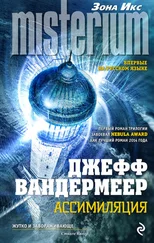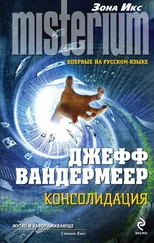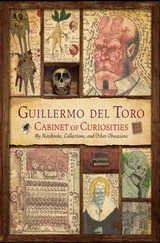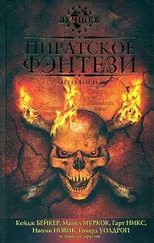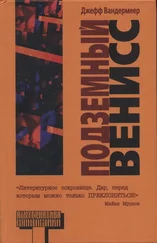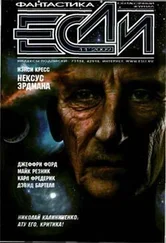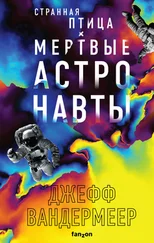Джефф Вандермеер - The Thackery T. Lambshead Cabinet of Curiosities
Здесь есть возможность читать онлайн «Джефф Вандермеер - The Thackery T. Lambshead Cabinet of Curiosities» весь текст электронной книги совершенно бесплатно (целиком полную версию без сокращений). В некоторых случаях можно слушать аудио, скачать через торрент в формате fb2 и присутствует краткое содержание. Жанр: Фэнтези, на английском языке. Описание произведения, (предисловие) а так же отзывы посетителей доступны на портале библиотеки ЛибКат.
- Название:The Thackery T. Lambshead Cabinet of Curiosities
- Автор:
- Жанр:
- Год:неизвестен
- ISBN:нет данных
- Рейтинг книги:5 / 5. Голосов: 1
-
Избранное:Добавить в избранное
- Отзывы:
-
Ваша оценка:
- 100
- 1
- 2
- 3
- 4
- 5
The Thackery T. Lambshead Cabinet of Curiosities: краткое содержание, описание и аннотация
Предлагаем к чтению аннотацию, описание, краткое содержание или предисловие (зависит от того, что написал сам автор книги «The Thackery T. Lambshead Cabinet of Curiosities»). Если вы не нашли необходимую информацию о книге — напишите в комментариях, мы постараемся отыскать её.
The Thackery T. Lambshead Cabinet of Curiosities — читать онлайн бесплатно полную книгу (весь текст) целиком
Ниже представлен текст книги, разбитый по страницам. Система сохранения места последней прочитанной страницы, позволяет с удобством читать онлайн бесплатно книгу «The Thackery T. Lambshead Cabinet of Curiosities», без необходимости каждый раз заново искать на чём Вы остановились. Поставьте закладку, и сможете в любой момент перейти на страницу, на которой закончили чтение.
Интервал:
Закладка:
Journal entries from the time are chaotic—Franz combined his engineering notes with a dream journal analyzing months of fevered and torrid dreams of war and his dead wife—but on November 12, 1884, Franz wrote, “If I cannot escape my dreams, I must learn from them. I see smokestacks and gun barrels. I hear gurgling boilers and empty shells raining on cobblestones. It seems clear what the gun is asking me for!”
What he had arrived at was bold and, some said, insane: the creation of a steam engine to load rounds into the weapon automatically at the same time that it discarded spent cartridges. He produced detailed drawings. He had patent forms drawn up. He ordered smiths to forge new boilers and frames. He gave his famous interview to Cranks and Steam author Aidan Birch. Then he died.
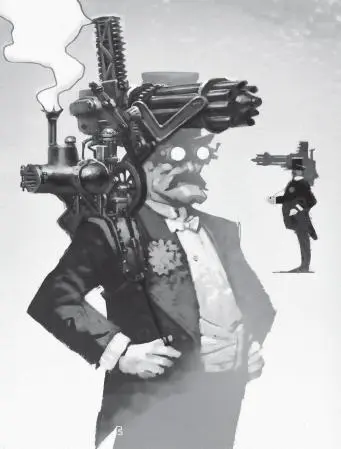
The Auble Gun, probably being modeled by Dr. Lauritz E. Auble (from a badly damaged photograph, ca. 1912).
A Son Continues His Father’s Uncertain Legacy
It was edging toward the spring of 1885. Snow was melting into the mud on the day of Dr. Franz Auble’s funeral in Massachusetts, and it seemed at first that his work might never be completed. Lauritz was a dutiful son and devoted business partner, but as he would later tell Aidan Birch, “I lacked my father’s creative impulse. What came easily to him came to me with great difficulty. I did not have his head for numbers or his vision.” Birch is reputed to have replied that this might be more boon than curse, and when Lauritz asked him to elaborate, said that “vision is not the same as sight.” Thus bolstered, Lauritz set out to forge a future for the Auble gun.
Lauritz’s first goal was to improve the weapon’s stability, especially after early tests with the portable boiler revealed the weapon to be dangerously inaccurate. Between the bubbling boiler and the rattling barrels, the gun proved good at providing a harrowing base of fire . . . but little else. The boiler chugged. The gun trembled. The shooter shook. In one well-photographed demonstration in 1885, the gun walked itself upward in such a flash that it hurled the test-shooter onto his back, cracking the boiler and belching steam onto the shooter and his handlers.
In response to the accident, Lauritz Auble experimented with orangutan shooters with Auble guns upon their backs, but no orangutan would come near the steaming device. “Only humans,” Lauritz wrote in his journal, “are bold enough to master the Auble gun and its formidable report.”
Abandoning his flirtation with trained animals, Lauritz devised new “human quadrapod” braces for would-be shooters. Each brace was bound to the shooter’s shoulder and upper arm, affixed to a long, crutch-like leg extending down to a rubber foot. This gave the shooter two additional points of contact with the ground—one spar from each elbow—thereby stabilizing the shooter and the gun. This refined design is what Lauritz Auble took to the U.S. Army and Navy for demonstrations in the winter of 1885.
It did not fare well.
According to one military observer, the demonstration shooter “moved about like a newborn calf with a Gatling gun on its back; unsteady and uncertain. . . .” The Navy passed on the gun altogether. The Army ordered one revised Auble gun, but canceled their order within the week. Demonstrations for the British Army, the Canadian Army, and a small band of fanatical freemasons fared no better.
Seemingly, Lauritz was out of options. The unwanted gun had become a mechanical albatross, one that could counterintuitively kill with the slightest mis-shrug, yet could scarcely hit a target.
“My father wouldn’t quit if he were here,” Lauritz wrote in his diary. “In all the hours I spent watching him in his workshops, no lessons were more clear than these: That my father loved me and that he would not abandon his work for anything short of death.
“Neither shall I.”
The Repurposing of the Gun for Entertainment
However, unnoticed by Lauritz, something positive was happening at his demonstrations—something that caught the attention of entrepreneur Luther Fafnerd: crowds of civilians were coming out to see the Auble gun in action.
By 1885, Luther Fafnerd was known for two things: his famed, contest-winning mustache, and the traveling circus shows he produced with his cousin, Thaddeus. Luther Fafnerd visited Lauritz Auble in January of 1886 at the Auble townhouse in Boston, and, over brandy and cigars, devised a new function for the Auble gun (and for Lauritz Auble).
As reported by the local paper, Fafnerd famously said after the meeting, “I know spectacle, and what Lauritz Auble has there is spectacular. Bring your eyeballs, ladies and gentlemen, and your earplugs—we have a new attraction!”
Lauritz tapped into his experiences pitching the Auble gun to military men to transform himself from businessman to showman. He traveled Europe and America with the next-generation Auble gun on his shoulder, demonstrating the weapon’s incredible power and phenomenal noise for audiences from San Francisco to Prague. He wore a top hat and tuxedo and touted the Auble as a gentleman’s engine of war.
Lauritz eroded dummy armies with a withering barrage of lead. Children marveled. Lauritz blasted plaster bunkers to bits. Crowds applauded.
While visitors were cheering, Lauritz was going deaf, like his father. So he incorporated that into the act. Cries of “Wot wot wot Lauritz?!” greeted him every time he ascended the stage.
Encouraged beyond his wildest dreams, and desperate to keep his audience—which he saw as “vindication of my father’s work”—Lauritz devised increasingly theatrical shows, casting himself as a dramatic star and his Auble gun as a variety of famous weapons. He drew the gun from a papier-mâché stone and became King Arthur. Then he shot the stone to pieces and slew a dozen mannequin Mordreds. He strode across a rocky field, perched atop an elephant with an Auble on his shoulder, and became Hannibal blasting cardboard centurions apart with a steam hiss and a rattling thrum.
“People demand not just a performance,” Luther Fafnerd once said, “but heroics !” Lauritz imagined that he was delivering just that.
His plans grew out of control. He devised a fifty-man stunt show called The Battle of the Nile that would pit Auble-armed stuntmen in boats maneuvering and firing blanks at each other off the Chicago lakeshore, but the Fafnerds refused to pay for it. They had something else in mind.
American “automotive inventor” James Tasker had come to the Fafnerds with a new contraption—the Tasker Battle Carriage—and a simple sketch for a show: pit the rumbling Battle Carriage against lifelike animals preserved with rudimentary taxidermy.
Best of all, for outlandish sums, private citizens brought in by one of the Fafnerds’ circus trains could ride the Battle Carriage and hunt animals loosed from pens into Tasker’s private ranch for the occasion. Tasker had effectively found a way to monetize the testing process for his new weapon-wagon. As Tasker wrote the Fafnerds in 1908: “Auble provides a weapon you want to see—I provide a weapon that spectators actually wish they could fire first-hand. For a few, we make that wish come true!”
Thaddeus Fafnerd signed the deal with Tasker in the summer of 1908 without telling Lauritz. Soon after, Lauritz was out of a job.
The Auble gun had failed as a weapon of war and had gone out in a hail of glory as a novelty. What could the future possibly hold? “Perhaps a joke, perhaps a curious footnote,” Lauritz is said to have muttered on more than one occasion.
Читать дальшеИнтервал:
Закладка:
Похожие книги на «The Thackery T. Lambshead Cabinet of Curiosities»
Представляем Вашему вниманию похожие книги на «The Thackery T. Lambshead Cabinet of Curiosities» списком для выбора. Мы отобрали схожую по названию и смыслу литературу в надежде предоставить читателям больше вариантов отыскать новые, интересные, ещё непрочитанные произведения.
Обсуждение, отзывы о книге «The Thackery T. Lambshead Cabinet of Curiosities» и просто собственные мнения читателей. Оставьте ваши комментарии, напишите, что Вы думаете о произведении, его смысле или главных героях. Укажите что конкретно понравилось, а что нет, и почему Вы так считаете.

